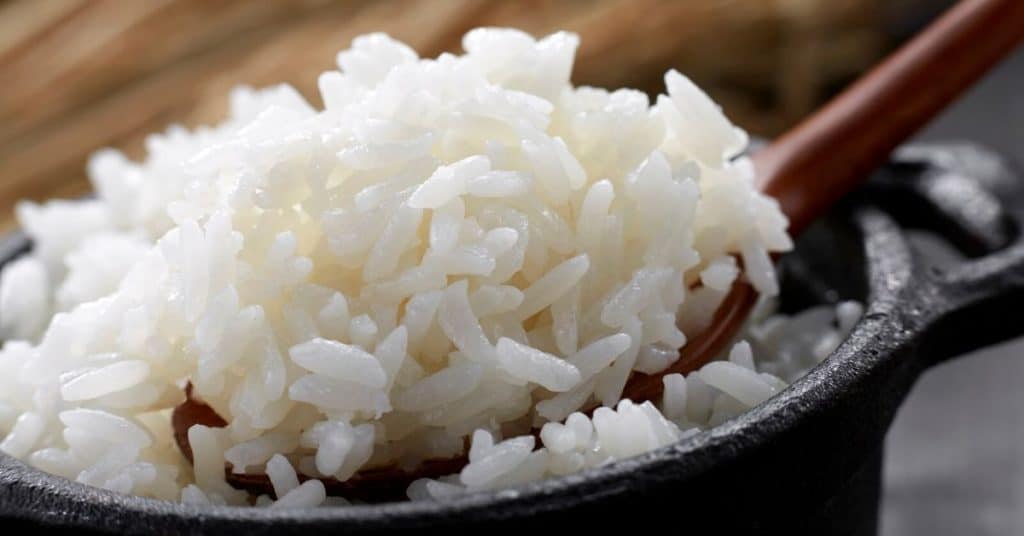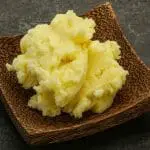Briefly, there are four ways to reheat rice: in the microwave, on the stove, in a wok, or in an air fryer.
Rice is one of those foods my mom warned me not to reheat. It was probably better safe than sorry. It’s because leftover rice can contain the bacteria called Bacillus cereus that can cause food poisoning.
That is why many seniors simply abstained from reheating rice. However, if everything is done correctly, the rice doesn’t have to be any problem.
Storing Cooked Rice
An essential requirement for the safe consumption of reheated rice is that you have initially stored it well. This means when it is freshly cooked, save the leftovers you have in the fridge as soon as possible to reduce bacteria growth.
In the fridge, you can store cooked rice for three to a maximum of four days. A little longer, it can stand in the freezer for up to 3 months. Do not leave the rice on the kitchen counter to stand for hours as you risk a rush of bacteria that could harm you later.
Heating To The Right Temperature
Whichever way of reheating you choose, keep in mind that the rice really needs to be very reheated, actually hot. If you heat it just a bit to make it warm, you will create even better conditions for bacteria. So, try to cook the leftover rice appropriately, even if it means waiting with consumption for a few minutes.
After you’ve reheated your rice, consume it right away and don’t leave it on the counter to stand. What you should, by no means, do is reheat the rice multiple times. So, when you take it out of the fridge, reheat it and eat it. If there is anything left, rather throw it away to avoid the risk of possible poisoning.
Warming Up Rice In The Microwave
The key to reheat leftover rice well in the microwave is to create steam inside the pan in which you are cooking so that the rice gets a more delicate texture and is not too sticky. Here’s how to do it.
Step 1: Add water to the bowl
In a microwave-safe bowl, add a little water, depending on how much rice you have—maybe two to three tablespoons. You can also add soup broth if you have it. Mix the rice and separate the lumps that have stuck together, then cover the dish and place it in the microwave.
Step 2: Stir every minute
Turn on the microwave at a one-minute interval and then take out and stir the rice. If you do not do this, the outer edges may be very hot, and the rice’s inner part remains cold. Repeat this three to four times until the rice is thoroughly heated.
Heating Up Rice On The Stove
Again, creating steam inside the pot will help warm up the rice better. Besides, you need to add liquid to keep your rice from burning and not to stick to the container.
Step 1: Add water to the rice in the pot
You need to put in enough water so that the rice does not burn, but not too much so that it is not too watery and gooey. When you have mixed the rice with water and smashed the lumps up, cover the pan, and you can start cooking the rice.
Step 2: Stir periodically
You have to stir the rice quite often to keep it evenly heated, and again, so it doesn’t burn to the pot’s bottom. It will probably take you 6 to 8 minutes until the rice is thoroughly heated. Let it rest a bit before consumption because it will be pretty hot food.
Reheating Rice In A Wok
Reheating the rice in a wok is a convenience because you can immediately add the other ingredients you want to your meal and prepare it all together. Here are a few tips on how to do it.
Step 1: Add oil to the wok
You need to add a little oil on which to cook, so it doesn’t stick and burn. Put some olive oil or another type of oil that you desire. The oil will immediately give a flavor to the rice you are heating.
Step 2: Cook the rice
Add the rice and mix everything. Continue to cook and stir occasionally to heat it evenly, and so that the oil is well-distributed throughout the meal. You can now add the other ingredients you have prepared that you want in your feed. Vegetables or cooked meat, you can heat everything together to the end.
Heating Up The Rice Using an Air Fryer
The air fryer is just as suitable for heating rice as it is for other dishes you have prepared. You should not be discouraged by the thought that the rice does not fit well in the basket. Just remember to get the food’s internal temperature high enough to kill bacteria and follow simple guidelines.
Step 1: Choose a suitable pan
Of course, you cannot simply put the rice in the mesh basket. It is best to put it in a cake pan deep enough for the contents to fit nicely. Make sure it is the right size to fit in the air fryer. Then add the oils and mix well. Some recommend covering with aluminum foil for better results to retain moisture, but this is optional.
Step 2: Heat for six to seven minutes, stirring occasionally
The fryer should be preheated to 320 F. It will take about 6 to 7 minutes to reach the desired warmth, but ensure that it is hot enough before stopping the process. Stir the rice twice to three times during the cycle so that all parts are heated equally.
How To Reheat Leftover Fried Rice
You can reheat fried rice the same way as you would do for steamed rice. For example:
- Using a microwave
Place your rice in a bowl and cover it with a plate to maintain the moisture if preferred, then place it in the microwave and cook it for 3-5 minutes depending on the amount of rice.
- Using stove tops
Place your frying pan on the stovetop over medium-high heat then add a tablespoon of cooking oil in. Once the pan is hot, add leftover rice in and stir constantly for 3-5 minutes until the rice is evenly heated.
FAQs
Conclusion
The most important thing when reheating leftover rice is to pay attention to the safety of consumption.
It would be best if you first stored the rice properly in the refrigerator as soon as possible after the first cooking. Then, you need to reheat it very well to ensure that your food is safe for you and your family.
If you follow the safety instructions and tips for better taste while reheating, your rice will be a great addition to the meal the following day. If you find your leftover rice is spoiled, throw it away and use these rice alternatives if needed.
See more:
*Image by depositphotos/lichaoshu









